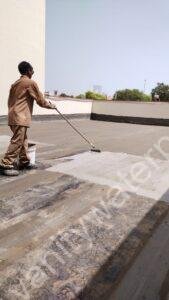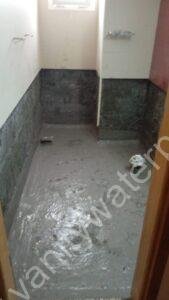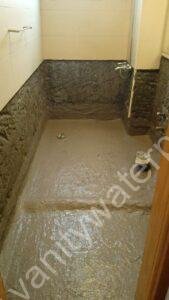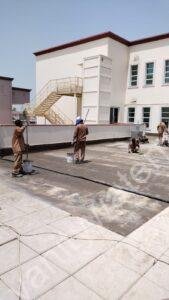Maintaining a good-condition roof is crucial to ensure a villa’s durability and safety. Roof damage occurs when harsh weather conditions combined with moisture and temperature changes persist over time, resulting in leaks and mold growth alongside structural problems. Roof waterproofing is an effective method to defend your villa against these issues. What indicators should alert you to the need for roof waterproofing on your villa? This guide addresses the important signs that signal the need for roof waterproofing along with the steps to achieve enduring protection.
Signs That Your Villa Needs Roof Waterproofing
1. Water Leaks and Stains
Water leaks serve as a clear indicator that your villa requires roof waterproofing. Water dripping from the ceiling and wet patches on walls demonstrate that moisture is infiltrating your roof. The presence of brown or yellow stains on walls and ceilings indicates that water exposure has persisted long enough to potentially damage structural integrity over time.
2. Weak or Sagging Roof Structure
Sagging roofs serve as serious warning signs indicating possible water damage. The buildup of water in specific roof locations causes structural weakening, which results in sagging sections. Neglecting water damage to your roof structure may lead to expensive repair bills or cause the roof to collapse entirely.
3. Damaged Roof Shingles or Tiles
Inspect your villa’s tiled or shingled roof for broken, missing, or curled shingles. Water infiltrates through damaged roofing materials to create leaks and damage interior spaces. Routine inspections enable early detection of such problems and prevent serious destruction.
4. Increased Energy Bills
An insufficiently waterproofed roof will negatively affect insulation in your villa, complicating temperature control inside the home. A sudden rise in your energy bills may indicate heat loss during winter or heat gain during summer periods, which makes your HVAC system operate more intensively.
5. Water Pooling on the Roof
Water pooling happens easily on flat roofs, which over time can result in leaks and structural damage. Standing water on your roof after rain indicates inadequate drainage, which requires roof waterproofing to avoid additional problems.
6. Cracks in the Roof or Ceiling
Temperature changes cause roof surface cracks to form as time passes. The cracks serve as pathways for water to enter, which results in both seepage and subsequent damage. Detecting cracks in your ceiling or roof requires you to explore waterproofing options.
What to Do About It?
Once you identify signs of roof damage, taking immediate action is crucial. Here’s what you can do to ensure effective roof waterproofing for your villa.
1. Conduct a Roof Inspection
Start by performing a thorough inspection of your villa’s roof. Look for visible signs of damage, such as leaks, cracks, missing shingles, and mold growth. If you’re unsure about assessing the condition of your roof, consider hiring a professional roofing contractor.
2. Choose the Right Waterproofing Method
Several waterproofing techniques are available depending on the type of roof your villa has. Some of the most common waterproofing methods include:
- Bituminous Membrane: A durable and cost-effective solution often used for flat roofs.
- Cementitious Waterproofing: A simple yet effective method for concrete roofs.
- Polyurethane Waterproofing: Ideal for areas prone to heavy rainfall and high moisture.
3. Repair Any Existing Damage
Before applying a waterproofing solution, address any existing roof damage. This includes fixing leaks, replacing broken tiles, sealing cracks, and improving drainage systems.
4. Apply Waterproof Coatings
Once repairs are completed, applying a high-quality waterproof coating will add an extra layer of protection. Choose a coating that suits your roof type and climate conditions for maximum effectiveness.
5. Improve Drainage Systems
Ensure that your villa’s roof has a proper drainage system to prevent water pooling. Clean gutters and downspouts regularly to avoid blockages that can lead to leaks and water damage.
6. Regular Roof Maintenance
Preventive maintenance is key to extending the lifespan of your roof. Schedule periodic roof inspections and waterproofing touch-ups to ensure long-term protection against moisture damage.
7. Hire a Professional Roofing Contractor
For the best results, consider hiring an experienced roofing contractor who specializes in roof waterproofing. Professionals have the expertise and tools to apply waterproofing solutions effectively and ensure your villa remains protected for years to come.
Conclusion
Roof waterproofing is essential for maintaining the integrity and longevity of your villa. If you notice signs such as leaks, mold growth, peeling paint, or structural damage, it’s time to take action. By conducting regular roof inspections, choosing the right waterproofing method, and hiring professionals when needed, you can protect your villa from costly water damage and ensure a safe and comfortable living environment. Don’t wait until the damage worsens—invest in roof waterproofing today and safeguard your home for the future.






















